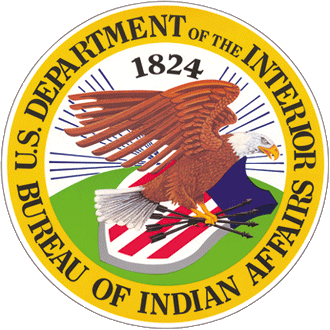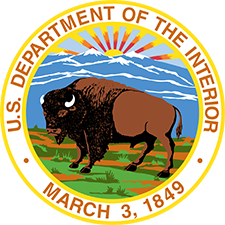WASHINGTON – Today, Assistant Secretary for Indian Affairs Tara Mac Lean Sweeney announced the Blackwater Community School, located within the Gila River Indian Community in Coolidge, Ariz., will receive $30.1 million dollars, and the Quileute Tribe will receive $44.1 million dollars for the Quileute Tribal School located on Quileute reservation in La Push, Wash., to award design-build contracts for new school buildings. In 2016, Indian Affairs selected both schools as two of 10 schools for replacement through the No Child Left Behind (NCLB) replacement school construction process.
The Blackwater Community School has elected to manage the project using a design-build contract for their new school through a Public Law 100-297 Grant and the Quileute Tribe has elected to manage the project using a design-build contract for their new school through a Public Law 93-638 Self-Determination Contract.
“Today is a great day for Native education at Indian Affairs,” said Assistant Secretary Tara Sweeney. “I am excited for the next phase of this process to initiate for these schools. I appreciate everyone involved with these projects from Indian Affairs, Bureau of Indian Education, the schools, and tribal communities for their dedication to take these schools from an idea to the world-class buildings that they will become.”
The Division of Facilities Management and Construction for Indian Affairs (DFMC) will provide oversight verification throughout the project and will be available to provide technical support to the Blackwater Community School and the Quileute Tribe. The replacement project for Quileute Tribal School authorizes a new 60,950 GSF campus supporting a projected K-12 grade enrollment of 79 students. The replacement project for the Blackwater Community School authorizes a new 88,547 GSF campus supporting a projected K-5 grade enrollment of 409 students.
“Our team at Indian Affair is proud to be a part of the process of building the modern infrastructures that reflect cultural values and tribal community input for student learning,” Director of the Office of Facilities, Property and Safety Management for Indian Affairs Darrell LaRoche said. “We’re thrilled that the new schools will be considered state of the art with their internet capabilities and classroom smart boards. With community involvement during the design process, the classrooms are tailored to support cultural specific teaching for the students.”
“A school’s environment is as important as the lessons taught in the classroom,” Bureau of Indian Education Director Tony Dearman said. “We are proud to work with Indian Affairs to build a new school where we can deliver excellent in-classroom instruction on the first day it opens its doors.”
Quileute Tribal School was the second 2016 NCLB School to complete the planning phase and first to complete a preliminary 20% design. To ensure compliance with Washington State requirements and enhanced community involvement this project provides a Language/Cultural Lab, permanent stage space, and a wood carpentry vocational shop. This project will be fully compliant with Washington Sustainable Schools Protocol and the Guiding Principles for Sustainable Federal Buildings. The current school facility is located in a designated tsunami zone near the ocean. The new school site is located at elevation safely outside the tsunami zone.
The Blackwater Community School is the third NCLB School to completed planning. To ensure compliance with Arizona State and Gila River Tribal requirements and enhanced community involvement this project provides a Language/Cultural Lab, Science Lab/Traditional Farming and Gardening classroom, Art Program Classroom and a Science, Technology, Engineering and Mathematics Classroom. This project will be fully compliant with Leadership in Energy and Environmental Design (LEED) Protocol and the Guiding Principles for Sustainable Federal Buildings.
The Laguna Elementary School received the first award of $26.2 million to award a design-build contract on May 2, 2018. Within the next few weeks, Dzilth-Na-O-Dith-Hle Community School in Bloomfield, N.M. will begin the preliminary design stage and will be the fourth school to be funded. The remaining six schools are expected to complete the planning phase by the end of 2018.
The Assistant Secretary–Indian Affairs advises the Secretary of the Interior on Indian Affairs policy issues, communicates policy to and oversee the programs of the BIA and the BIE, provides leadership in consultations with tribes, and serves as the DOI official for intra- and inter- departmental coordination and liaison within the Executive Branch on Indian matters.
The Office of Facilities, Property and Safety Management for Indian Affairs is responsible for policy, oversight, and technical assistance for facilities management, facilities construction, asset management, safety management, property management, and real property leasing for all of Indian Affairs, including Bureau of Indian Affairs (BIA) and Bureau of Indian Education (BIE). These responsibilities are carried out through the Division of Facilities Management and Construction, Division of Safety and Risk Management, Division of Property Management, and the Real Property Leasing Program.
The Bureau of Indian Education implements federal Indian education programs and funds 183 elementary and secondary day and boarding schools (of which two-thirds are tribally operated) located on 64 reservations in 23 states and peripheral dormitories serving over 47,000 individual students. The BIE also operates two post-secondary schools and administers grants for 29 tribally controlled colleges and universities and two tribal technical colleges.
###
UPDATED: The original version of this press release misstated that Dzilth-Na-O-Dith-Hle Community School is located in Bloomington, NM. We have since corrected the mistake. Dzilth-Na-O-Dith-Hle Community School is located in Bloomfield, NM.




